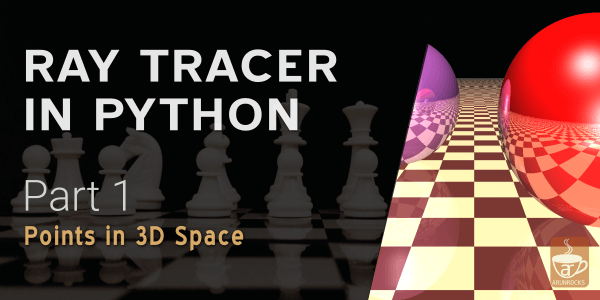It is Diwali time and the retail shopping excitement in India is comparable to Christmas season in the West. Everyone seems to be praying for their old and fat CRT TV to stop working, so that they have an excuse to buy a brand new flat screen TV.
We were on the lookout for a flat screen LCD TV sometime back and deliberated various brands for a while. Actually, for me every gadget purchase takes ‘a while’ due to the amount of research I generally do. Since, I do not watch TV regularly, I had to practically learn all the TV jargon from scratch to understand the sales-speak.

After a month of ‘superficial research’, some of the elementary findings were:
-
The old CRT TV is completely out of the market. You might be able to find, at best, a 21" CRT TV.
-
There are no plasma TVs in the 32" category. They only come in bigger sizes and guzzle a lot of power.
-
The market leader in Indian TV market is Samsung followed by LG. The Koreans also dominate the world market this way with low cost yet high quality TV sets.
-
LED screens today are a gimmick. It’s just LED backlighting and true LED TVs are a few years away from an average consumer’s reach. Their saturated colors in the showroom is just clever tweaking.
-
32" is a reasonably large screen for our apartment living room. Any bigger and you will feel you are literally inside the screen. (This is subjective, of course)
-
The higher end TVs have higher frame rates for sports action. This is called by different manufacturers by different names such as Tru Motion or Flo motion. This is very annoying while watching movies as it makes them look like TV serials. This might not be perceptible to many, but personally I couldn’t watch my favourite movies being ‘interpolated’ this way
-
HD Ready (720p) would be cheaper than Full HD (1080p), but they will be obsolete soon. Interestingly for screens smaller than 36", the difference in picture quality is not quite evident but to the trained eye.
-
In most modern TVs, there is no need for a DVD or bluray player if you prefer to keep movies in your pen drive or hard disk. You can simply plug in the device directly to your TV set. The TV presents a file browser and you can play the video if the file format is supported.
-
No comments on 3D TV as it was not a requirement for us.
All these facts were gathered after multiple visits to various showrooms and from the Internet. Initially I had visited a couple of stores in April this year and found out that, among the leading brands, only LG offered IPS displays at that point in time. Now, I know a thing or two about IPS displays because it is the same display technology used on Apple Cinema displays and even the iPhones.
IPS displays have the widest viewing angles and excellent color reproduction. In fact, I was so impressed by IPS displays that I bought a 23" DELL IPS monitor specifically for desktop use. Hence, I was almost certain to buy an LG.
Around May, LG and most leading brands did a refresh of their lineup of TV screens (i.e. 2011 models). LG no longer offered IPS displays for their 32 inch screens. This was extremely disappointing as this meant that I have to visit the stores again to view and reevaluate the sets.
Visits to the nearest Samsung and LG showrooms resulted in quite a bit of disappointment. Their 32" LCD models were a shadow of their predecessors. The color reproduction was weak or dull. The sound appeared to come out of a closed box. The sales representatives were not very clear in explaining these “improvements” such as why LG decided to abandon the IPS display. I was even tempted to buy an older CRT instead!
We then visited the Girias outlet near our apartment, from where we have made most of our purchases. The sales representative was quite patient and knowledgeable. He explained that the non-IPS displays like Twisted nematic (TN) have been improving in the past couple of years and the color reproduction was almost at par. We were able to visually compare the viewing angles and experience this for ourselves.
When I explained to him that I found the LG and Samsung audio and video quality as being not satisfactory, he demoed a Sony Bravia model - CX 420. Now, personally, I detest the Sony brand due to their tendency to create their own standards like the Memory stick, Betamax and UMD. Also, they charge premium rates for the same feature set simply due their brand name (in laptops, for instance). Besides the number 420 does ring a bell in India :)
But I was genuinely surprised when the model actually had significantly better picture quality, color reproduction and excellent sound (with bass) for a price premium of 3K compared to other brands. However, the most impressive feature was the wide variety of video and audio formats that was supported out of the box. Even today there are TVs that can support pen drives but not harddisks; or ones that can play .avi but cannot open .mkv videos. But the 420 could play virtually any type of file lying in my harddisk except for videos with 5.1 channel audio tracks (because, duh, it had only 2 speakers).
So we finally settled on a Sony. Once home, we wall-mounted the unit and now its almost like a colourful window in the living room :).
Sony Bravia CX 420 - a Post-purchase review
What follows is a review of the TV written after 5 months of use. It goes into greater detail regarding some of the aspects covered earlier.
Unpacking / Appearance
Unlike the good old dabba TVs, today’s TV boxes can be carried by one person. The box contains a stand if you are mounting on a flat surface. The assembly takes about 10 mins and the printed instructions are quite clear. Wall mounting would need additional screws so it’s best that you ask the Sony personnel to wall-mount at no additional cost.
The TV is a classy all-black model with a slightly glossy bevel. However the screen is, thankfully, matte. So a mirror-like reflection will not be present from various light sources in your living room. The steroe speakers are located at the bottom. The remote is quite long and slender. It is quite easy to hold and the button are well spaced out.
Picture Quality
The Bravia series models use Live Color technology which makes pictures more vivid without making them unnaturally over saturated. This combined with various noise reduction techniques makes watching non-HD content such as Cable TV channels quite enjoyable. The picture is also intelligently resized to stetch the entire HD screen without letterboxing.
The color reproduction of HD videos is similarly quite superior to comparable brands (we did spend a lot of time in the showroom comparing this aspect alone :) ). However, Sony leaves very little room for tweaking by giving you only 4-5 preset modes like Theatre, Sports etc. Other brands might give you more parameters to fiddle with.
The viewing angle was quite good considering that it is not an IPS display. However, the difference in vertical viewing angles seemed to vary quite a bit. Hence, it might be a factor to consider while determining the height to wall mount the set.
There is a noticeable blur while taking photographs of the videos being played back. Hence it may or may not be the best choice for watching sports. I don’t watch much sports anyways.
Sound Quality
As mentioned earlier, I was not interested in connecting an external sound system like a home theatre system to the set. Hence, I was keen on a model that had good built-in sound. Compared to LG or Samsung, Sony sets seemed to have good sound reproduction even at high volumes without distortion.
The bass enhancing technology was not very effective but it did give sufficient bass to enjoy action movies. The stereo separation is not that great considering that both speakers fire downward, but it is definitely there!
Summary
Overall, we are quite happy with the purchase, though we realise that our needs were quite limited to start off with. Interestingly, we found ourselves spending more time watching movies from the hard-disks (yes plural, I have quite a collection :) ) rather than watching boring television programmes. I am yet to connect my Android phone which has a mini-HDMI output to the TV yet, but I hear that it’s an excellent idea.
Couldn’t be happier!




